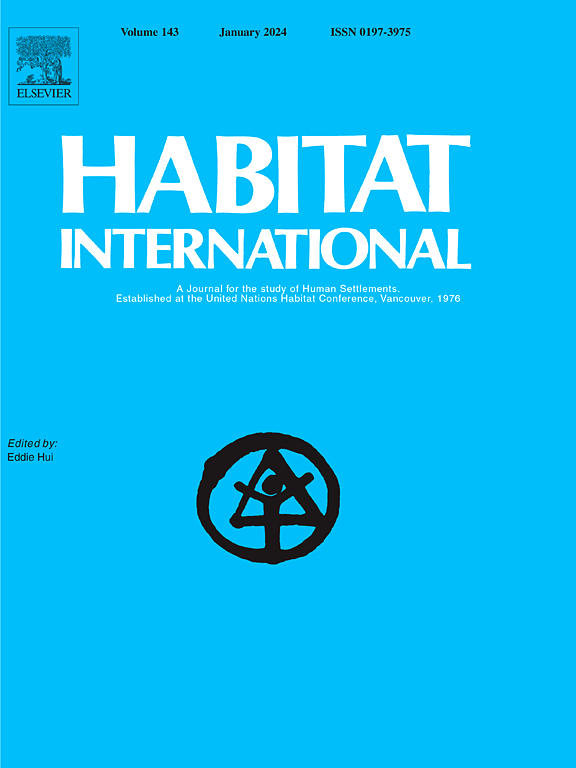视听元素在住宅区位选择中的作用
IF 7
1区 经济学
Q1 DEVELOPMENT STUDIES
引用次数: 0
摘要
了解个人如何感知和重视城市环境中的视听元素是具有挑战性的,但对于模拟人们的居住地点选择至关重要。我们调查了在住宅选择背景下为改善视听属性付费的意愿,考虑了三个潜在构式的影响:噪音敏感性、声音愉悦性和视觉宜居性。我们使用个人的社会人口统计和地点信息来补充计量经济学估计。数据来自一项明确的选择实验,使用数字调查和沉浸式视听技术,考虑了36个不同住宅地点的一组场景。混合选择建模方法显示,当受访者(i)考虑不同视听指标的空间组合时,他们对住宅选择地点的支付意愿存在显著的异质性;㈡表现出对噪音敏感,并暴露于声压级的高能量波动中;(三)居住在特定地方条件附近并符合社会人口特征;(四)允许听觉和视觉感知影响偏好。我们的研究结果对住房区位和政策具有启示意义,证明了主观观念、个人和身体特征对住房选择的影响。本文章由计算机程序翻译,如有差异,请以英文原文为准。
The role of audio-visual elements in Residential Location Choice
Understanding how individuals perceive and value audiovisual elements in the urban environment is challenging but essential to model people's residential location choices. We investigate the willingness to pay for improved audiovisual attributes in a residential choice context, considering the effect of three latent constructs: noise sensitivity, sound pleasantness, and visual liveability. We complement the econometric estimation using individuals' socio-demographic and place location information. Data came from a stated choice experiment using a digital survey with immersive audiovisual techniques considering a set of scenarios from 36 different residential locations. A hybrid choice modelling approach revealed significant heterogeneity in the willingness to pay for residential choice location when respondents (i) considered different spatial combinations of audiovisual metrics; (ii) demonstrated sensitivity to noise and were exposed to high-energy fluctuations in sound pressure levels; (iii) lived near a particular place condition and matched a socio-demographic characteristic and (iv) preferences were allowed to be influenced by auditory and visual perceptions. Our findings have implications for housing location and policy, demonstrating the influence of subjective perceptions and individual and physical characteristics in the choice of residence.
求助全文
通过发布文献求助,成功后即可免费获取论文全文。
去求助
来源期刊

Habitat International
Multiple-
CiteScore
10.50
自引率
10.30%
发文量
151
审稿时长
38 days
期刊介绍:
Habitat International is dedicated to the study of urban and rural human settlements: their planning, design, production and management. Its main focus is on urbanisation in its broadest sense in the developing world. However, increasingly the interrelationships and linkages between cities and towns in the developing and developed worlds are becoming apparent and solutions to the problems that result are urgently required. The economic, social, technological and political systems of the world are intertwined and changes in one region almost always affect other regions.
 求助内容:
求助内容: 应助结果提醒方式:
应助结果提醒方式:


